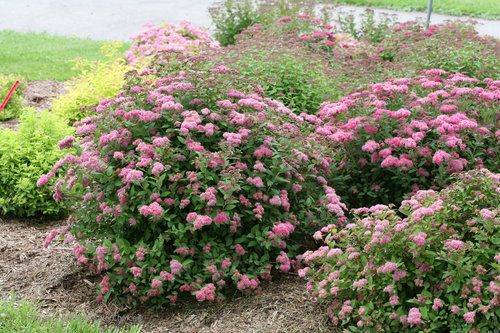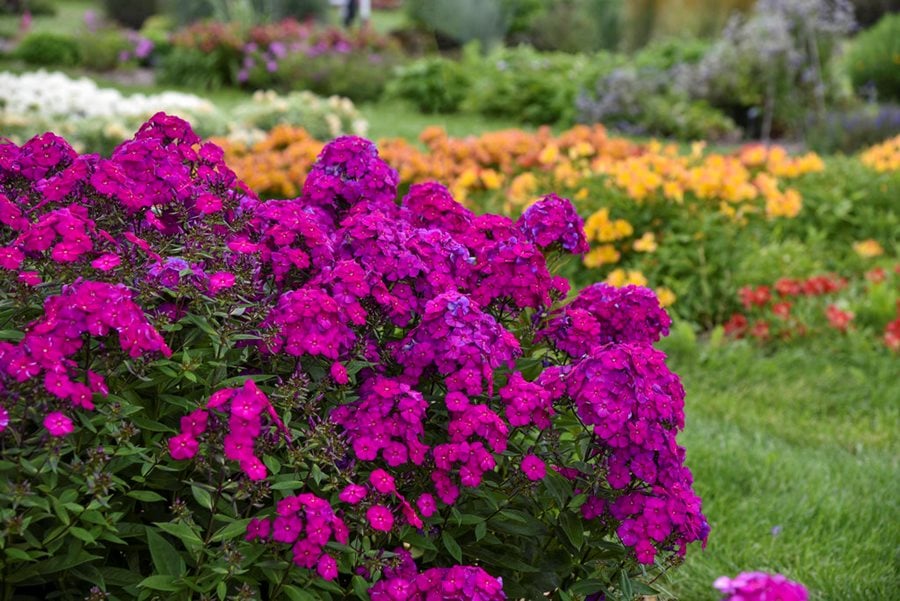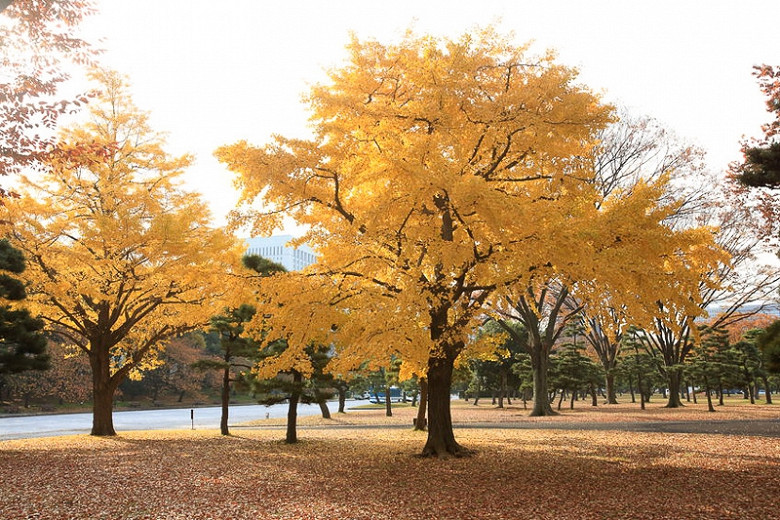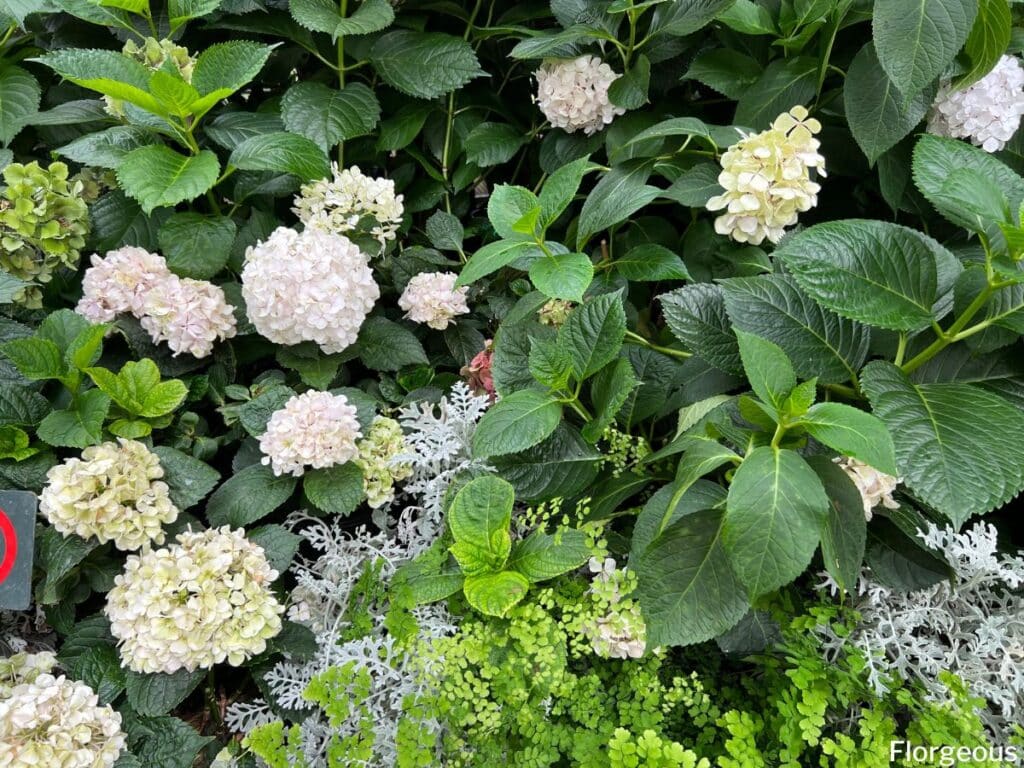Abelia Companion Plants That Will Make Your Garden Pop
Abelia Companion Plants That Will Make Your Garden POP
Abelias are beautiful evergreen shrubs that can add a touch of elegance and charm to any garden. They are known for their fragrant flowers, which bloom in shades of white, pink, or purple in the spring and summer. Abelias are also relatively low-maintenance plants, making them a good choice for even the most novice gardeners.
If you are planting abelias in your garden, you may be wondering what companion plants to choose. The right companion plants can help to enhance the beauty of your abelias and create a more interesting and inviting garden space. Here are a few of the best abelia companion plants:
- Spirea: Spirea is another evergreen shrub that blooms in shades of white, pink, or red. It is a good choice for companion plants because it has similar growing conditions as abelias. Spirea can also help to add height and structure to your garden.

- Weigela: Weigela is a deciduous shrub that blooms in shades of pink, red, or yellow. It is a good choice for companion plants because it blooms at the same time as abelias. Weigela can also help to add color and interest to your garden.

- Phlox: Phlox is a perennial that blooms in shades of white, pink, purple, or blue. It is a good choice for companion plants because it can tolerate a variety of soil conditions and light levels. Phlox can also help to add color and texture to your garden.

- Iris: Iris is a perennial that blooms in the spring. It is a good choice for companion plants because it can tolerate a variety of soil conditions and light levels. Iris can also help to add color and interest to your garden.

- Maidenhair tree: Maidenhair tree is a deciduous tree that has delicate, fern-like foliage. It is a good choice for companion plants because it provides shade for abelias in the hot summer months. Maidenhair tree can also help to add a touch of elegance to your garden.

- Heavenly bamboo: Heavenly bamboo is an evergreen shrub that has tall, bamboo-like stems. It is a good choice for companion plants because it can tolerate a variety of soil conditions and light levels. Heavenly bamboo can also help to add height and privacy to your garden.
- Lily of the Nile: Lily of the Nile is an annual that blooms in shades of white, pink, or yellow. It is a good choice for companion plants because it blooms at the same time as abelias. Lily of the Nile can also help to add color and drama to your garden.

- Catmint: Catmint is a perennial that blooms in shades of blue or purple. It is a good choice for companion plants because it attracts butterflies and other pollinators. Catmint can also help to add color and texture to your garden.
These are just a few of the many companion plants that you can choose for your abelias. When choosing companion plants, it is important to consider the size, growth habit, and light requirements of the plants. You should also consider the overall look and feel that you want to create in your garden.
With a little planning, you can easily choose the perfect companion plants for your abelias and create a beautiful and inviting garden space.
Abelia is a beautiful and versatile shrub that can be grown in a variety of conditions. It's no wonder that it's a popular choice for gardens across the country. But what about companion plants? Which ones will complement abelia's beauty and help it thrive?
There are many great options to choose from, but some of the best include:
Spirea: This shrub has similar light and moisture requirements to abelia, and it blooms at the same time. The two plants will look great planted together, and they'll also attract pollinators to your garden. Gardenia Inspiration
Maiden grass: This grass adds a touch of movement and texture to any garden. It's also tolerant of shade, so it's a good choice for abelias that are planted in partial shade. Gardenia Inspiration
Weigela: This shrub has showy flowers that bloom in the spring and summer. It's a bit more tolerant of shade than abelia, so it's a good choice for gardens that get some afternoon sun. Gardenia Inspiration
Phlox: This perennial blooms in a variety of colors, and it's a great choice for adding color to your garden. It's also tolerant of shade, so it's a good companion for abelias that are planted in partial shade. Gardenia Inspiration
Iris: This perennial has beautiful flowers that bloom in the spring. It's tolerant of a wide range of conditions, so it's a good choice for abelias that are planted in a variety of locations. Gardenia Inspiration
Of course, these are just a few of the many great companion plants for abelia. The best way to choose the right plants for your garden is to consider your climate, the amount of sunlight your garden gets, and the other plants that you already have.
To learn more about abelia companion plants, visit Gardenia Inspiration. This website has a comprehensive list of companion plants for abelia, as well as information on how to plant and care for these plants.
FAQ of abelia companion plants
- What are some good companion plants for abelia?
Abelias are versatile shrubs that can be paired with a variety of other plants. Some good companion plants for abelias include:
- Spirea: Spirea is another sun-loving shrub that blooms in the spring and summer. It comes in a variety of colors, so you can choose one that complements the color of your abelia.

- Weigela: Weigela is a flowering shrub that blooms in the spring and early summer. It has attractive pink or red flowers that will add color to your landscape.

- Phlox: Phlox is a low-maintenance perennial that blooms in the spring and summer. It comes in a variety of colors, so you can choose one that complements the color of your abelia.

- Iris: Iris is a spring-blooming perennial that comes in a variety of colors. It is a good choice for adding height and color to your landscape.

- Lily of the Nile: Lily of the Nile is a tall, tropical plant that blooms in the summer. It is a good choice for adding a pop of color to your landscape.
- What are the ideal growing conditions for abelia companion plants?
Most abelia companion plants prefer full sun and well-drained soil. They are relatively drought-tolerant, but they will appreciate regular watering during the hot summer months.
- How far apart should abelia companion plants be planted?
The spacing between abelia companion plants will vary depending on the size of the plants. In general, you should space them at least 2-3 feet apart. This will give them enough room to grow and spread.
- When should abelia companion plants be planted?
Abelia companion plants can be planted in the spring or fall. If you are planting them in the spring, make sure to do it before the last frost. If you are planting them in the fall, make sure to do it before the first frost.
- How do I care for abelia companion plants?
Abelia companion plants are relatively easy to care for. They need regular watering, especially during the hot summer months. They should also be fertilized once a year in the spring.
Image of abelia companion plants
- Abelia and Hydrangea: These two plants have similar growing conditions and can be planted together in a mixed border. The abelia's white or pink flowers will contrast nicely with the hydrangea's blue or pink blooms.

- Abelia and Camellia: Camellias are another good choice for companion plants for abelia. They both prefer full sun or partial shade and well-drained soil. The camellia's large, showy flowers will add a touch of elegance to the garden.

- Abelia and Viburnum: Viburnums are a diverse group of plants that come in a variety of shapes and sizes. Some viburnums, such as the doublefile viburnum, can be used as hedges. Others, such as the Koreanspice viburnum, can be used as specimen plants.

- Abelia and Azalea: Azaleas and abelias are both flowering shrubs that prefer acidic soil. They can be planted together in a mixed border or used as foundation plantings.

- Abelia and Nandina: Nandina is a hardy shrub that can tolerate a wide range of conditions. It can be used as a groundcover or as a specimen plant. The nandina's colorful foliage will provide interest in the garden throughout the year.

Post a Comment for " Abelia Companion Plants That Will Make Your Garden Pop"